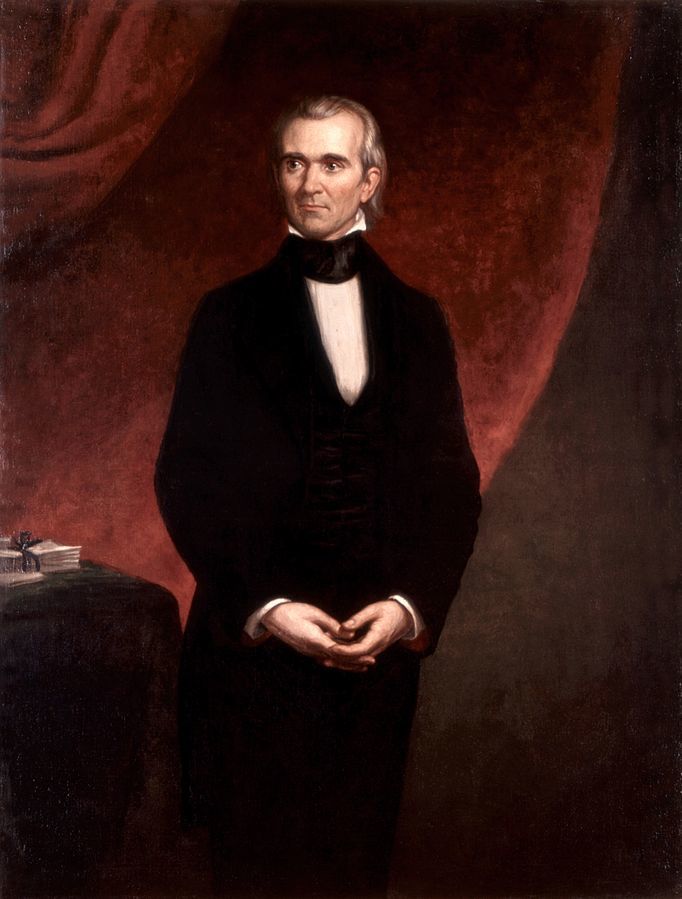Naval Academy
On October 10, 1845, the Naval Academy opened. The Secretary of Navy George Bancroft led it, located in Annapolis, Maryland.
Walker Tariff of 1846
The newly inaugurated president commissioned Robert J. Walker, his secretary of Treasury, to conduct a nationwide survey to protect the nations’ goods tariff rate. According to the results of the study, Secretary Walker suggested a significant reduction of tariff rates James Polk implied to northeastern Democrats that he supports. Soon, the Congress authored a bill despite the opposition inside the presidential cabinet.
Southerners and Westerners are in favor of the new tariff bill, while the northerners strongly opposed it. It led to heated debates. Vice President George M. Dallas served as a tie-breaker as he casts his vote in the Senate.
James Polk immediately signed the bill into law, which became known as the Walker Tariff.
The tariff reduced the rates matching the revenue level and dropped the policy connected to a percent of the value of the goods or ad valorem rate, amicable to rate regardless of the cost. The made few commodities duty-free.
Independent Treasury Act of 1846
James K. Polk stretched his muscles and revived the Independent Treasury Act that President Martin Van Buren signed in 1840.
The act was mainly about establishing independent treasury deposit offices that separate private or state banks from receiving government funds. It was designed as a replacement for the abolished Second Bank of the United States during the time of President Andrew Jackson and caused economic depression in the late 1830s.
The newly established Independent Treasury of President James Polk delegated the federal government to manage the government funds and required payments made in hard specie such as precious metals like gold and silver.
Annexation of Texas
In the last few months of President John Tyler’s term in office, he sent a resolution to Texas’s annexation. Before the inauguration of James Polk, Congress passed the recommendation of John Tyler.
The resolution allowed the Country of Texas to bypass certain stages and proceed to Texas’ admission to the Union; despite the threat of Mexico to start a war, if the United States annexed Texas, no combat occurred.
The diplomatic relationship of Mexico and the United States broke off because of a severe attack of Mexican troops to American soldiers patrolling and killed eleven soldiers in the disputed Nueces River and the Rio Grande as the southern border. James Polk asked Congress to declare war against Mexico. On May 13, 1846, Mexico and the United States were at war.
The Mexican War progressed rapidly. The United States was triumphant in the two-year battle, and Mexico renounced its claims to Texas. In exchange for $15 million, Mexico recognized the Rio Grande as the southern border of the United States. After the war, many troops died and wounded.
Many in the opposition believed that it was an orchestrated war to extend slavery in the new territories acquired.
Oregon Territory Claim
In his campaign for the presidential election in 1844, the promised to settle the Oregon Territory dispute with the British. It did not lead to any war; hence, they solved the dispute by negotiating. President James Polk bluffed the British that he wanted all the Oregon territory. He agreed with the 49th parallel boundary, which is now the Oregon, Idaho, Washington, and benefit from the Columbia River resources.
Department of Interior
Due to the Mexican-American War, it paved the way to an idea of establishing the federal government further. President James Polk’s Secretary, Robert Walker, indicated in his report that the General Land Office coincides with the Treasury and other growing responsibilities. It led to the proposal of opening a new Department of Interior.
The House of Representatives authored a bill to authorize the new department on February 15, 1849. The Senate immediately approved it and processed it in over two weeks. The Department of Interior was established on March 3, 1849.
Smithsonian Institution
James Smithson left a will with a footnote. It indicated that his estate would be moved to the United States to establish a Smithsonian Institution to cater to the curiosity and encourage scientific research and discoveries. His nearest kin was his nephew, Henry James Hungerford, who died without an heir. The U.S. Congress authorized Smithson’s gift on July 1, 1836. President James Polk signed the act of establishing the Smithsonian Institution on August 10, 1846.
California Gold Rush
On December 5, 1848, James Polk confirmed in his State Union Address the discovery of gold in the newly acquired California. Hundreds of Americans migrated to California to mine gold. Many believed that the president’s claim was a hoax to convince many citizens from the Eastside that gold was genuinely present in California.
US Presidents | ||

